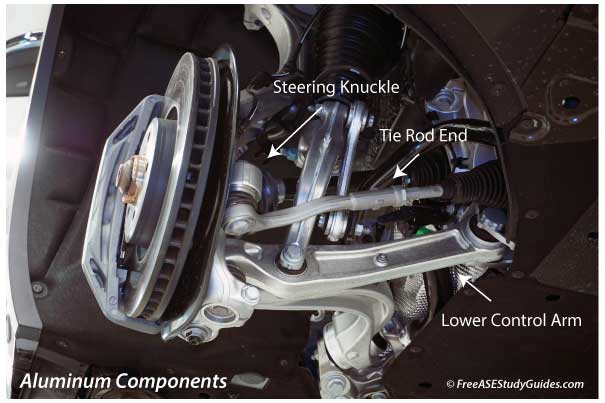Loose Tie Rod Ends

Tie rod ends connect the steering rack or parallelogram steering linkage system to the arm on the steering knuckle. The inner tie rod is near the vehicle's center, and the outer tie rod is by the wheel attached to the steering arm. Rubber bellow boots protect the sockets of the inner tie rods from the environment.

A. The tie rod ball stud can wear in its socket, resulting in excessive free play and changes in the toe. Raise the vehicle and rock the sides of the tire back and forth to check for loose tie rod ends.

B. A loose tie rod sleeve can be dangerous. Use a tie rod tool when turning the sleeve on parallel linkage systems to prevent damage.

C. The connection to the steering knuckle can become damaged or out of round, resulting in a loose connection. Aluminum steering knuckles can become oval-shaped from wear or striking this connection with a hammer. Use a special tool or puller, not a steel hammer, to remove aluminum parts from the steering and suspension systems.

D. Inner and outer tie rod ends found on rack and pinion steering systems will wear and become loose at the ball and socket. Rock the tire back and forth and notice any movement.